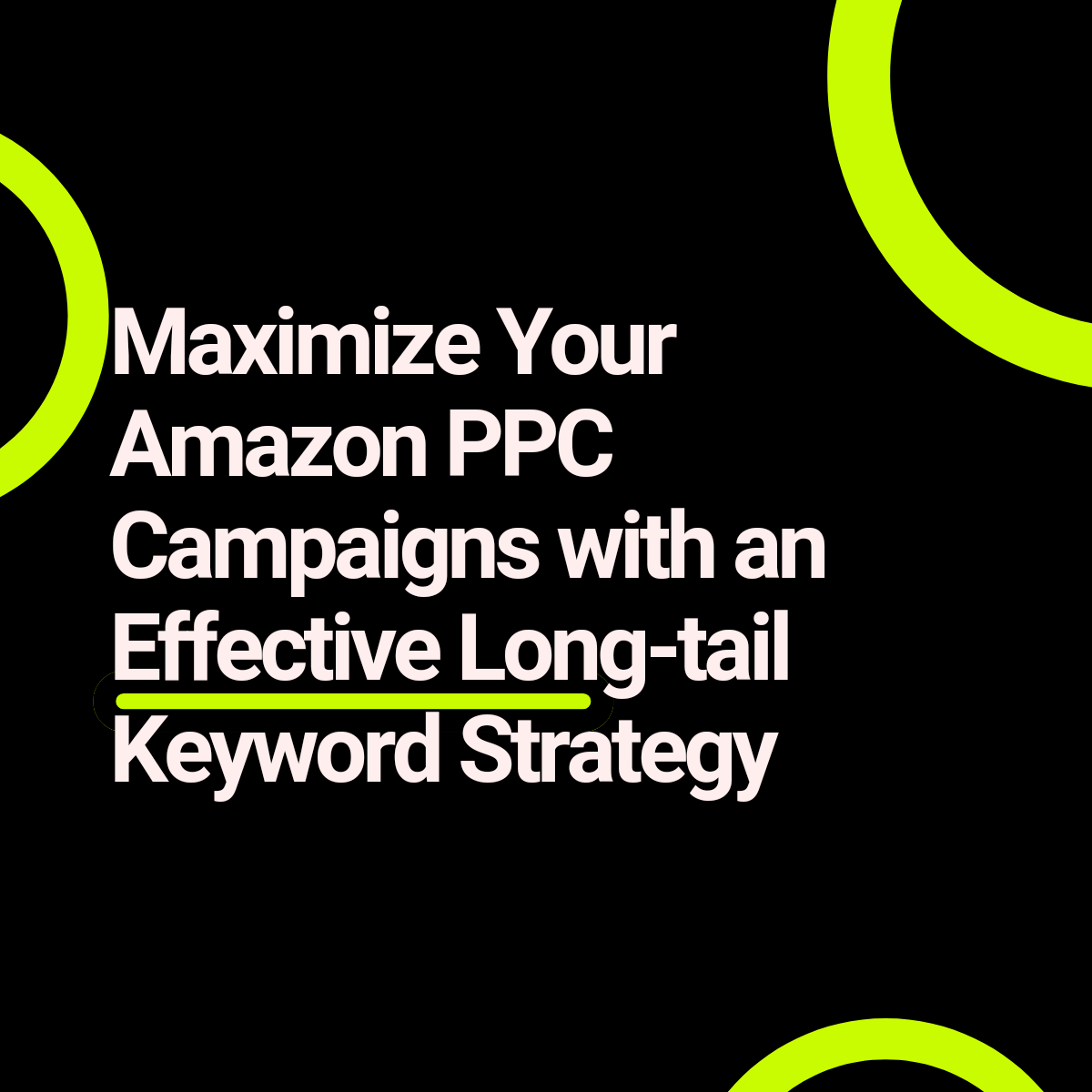Boost Your Amazon PPC CampaignsIn the competitive landscape of Amazon, harnessing the power of long-tail keywords can significantly enhance your Pay-Per-Click (PPC) campaigns. Long-tail keywords, being more specific and less competitive, can drive highly targeted traffic to your listings, increasing conversions and maximizing ROI.
Understanding Long-tail Keywords
What Are Long-tail Keywords?
Long-tail keywords are phrases that are typically longer and more specific than the more commonly searched keywords. These keywords may have lower search volumes, but they attract highly targeted traffic and have lower competition.
Characteristics of Long-tail Keywords
- Specificity: Target niche markets or specific customer intents.
- Lower Competition: Less competitive compared to head keywords, reducing bid costs.
- Higher Conversion Rates: Attract users with a clear purchase intent.
The MECE Framework for Long-tail Keyword Strategy
The MECE (Mutually Exclusive, Collectively Exhaustive) framework ensures comprehensive and non-overlapping coverage of all relevant aspects. Applying this framework, we’ll explore:
- Keyword Research
- Implementation in PPC Campaigns
- Monitoring and Optimization
- Tools and Resources
1. Keyword Research
Identifying Long-tail Keywords
- Customer Search Behavior: Analyze customer search terms to understand their intent and preferences.
- Amazon Autocomplete: Utilize Amazon’s search bar to uncover popular long-tail keyword suggestions.
- Competitor Analysis: Study competitor listings and PPC campaigns to identify effective long-tail keywords.
Tools for Keyword Research
- Helium 10: Offers a suite of tools including Cerebro and Magnet for keyword discovery.
- Jungle Scout: Provides insights into high-performing long-tail keywords.
- MerchantWords: Analyzes Amazon search data to generate keyword ideas.
Creating a Keyword List
- Brainstorming: Generate a broad list of potential keywords based on product features and benefits.
- Filtering: Narrow down the list by removing irrelevant or overly broad keywords.
- Prioritizing: Rank keywords based on search volume, relevance, and competition.
Keyword Research Table
| Keyword | Search Volume | Competition | Relevance | Priority |
|---|---|---|---|---|
| Organic dog food for small breeds | High | Medium | High | 1 |
| Eco-friendly dog toys | Medium | Low | High | 2 |
| Durable chew toys for aggressive chewers | Medium | Medium | High | 3 |
| Grain-free senior dog food | Low | Low | Medium | 4 |
| Hypoallergenic dog shampoo | Medium | High | Medium | 5 |
2. Implementation in PPC Campaigns
Structuring PPC Campaigns
- Ad Groups: Organize campaigns into ad groups based on keyword themes.
- Targeting Options: Choose between broad match, phrase match, and exact match to control targeting precision.
Crafting Compelling Ad Copy
- Relevance: Ensure ad copy aligns with the targeted long-tail keywords.
- USP (Unique Selling Proposition): Highlight unique features or benefits of your product.
- Call-to-Action (CTA): Encourage users to take action, such as “Buy Now” or “Learn More”.
Budget Allocation
- Initial Budget: Allocate a modest budget for testing long-tail keywords.
- Bid Adjustments: Adjust bids based on keyword performance to maximize ROI.
Example of Ad Group Structure
| Ad Group Name | Keywords | Bid Strategy | Budget |
|---|---|---|---|
| Organic Dog Food | Organic dog food for small breeds, Grain-free senior dog food | Manual Bids | $50/day |
| Eco-friendly Toys | Eco-friendly dog toys, Durable chew toys for aggressive chewers | Automatic Bids | $30/day |
3. Monitoring and Optimization
Performance Metrics
- Impressions: Number of times your ad is shown.
- Click-Through Rate (CTR): Percentage of ad views that result in clicks.
- Conversion Rate: Percentage of clicks that result in a purchase.
- ACoS (Advertising Cost of Sales): Cost of advertising divided by sales.
Optimization Techniques
- A/B Testing: Experiment with different ad copies and keywords to identify top performers.
- Negative Keywords: Exclude irrelevant search terms to improve targeting efficiency.
- Bid Adjustments: Increase or decrease bids based on keyword performance and ROI.
Example of Performance Metrics Table
| Keyword | Impressions | CTR | Conversion Rate | ACoS |
|---|---|---|---|---|
| Organic dog food for small breeds | 10,000 | 5% | 3% | 20% |
| Eco-friendly dog toys | 8,000 | 4.5% | 2.5% | 25% |
| Durable chew toys for aggressive chewers | 5,000 | 6% | 4% | 15% |
4. Tools and Resources
Keyword Research Tools
- Helium 10: Comprehensive tool for keyword research and competitive analysis.
- Jungle Scout: Popular tool for discovering profitable keywords and product opportunities.
- MerchantWords: Provides Amazon-specific keyword search volume data.
PPC Management Tools
- Sellics: Integrates with Amazon PPC to optimize campaigns and track performance.
- PPC Entourage: Helps manage and optimize Amazon PPC campaigns effectively.
- Teikametrics: Provides AI-driven insights to enhance PPC campaign performance.
Educational Resources
- Amazon Advertising Learning Console: Official training resources from Amazon.
- YouTube Channels: Channels like “EcomCrew” and “The Amazing Seller” offer valuable PPC insights.
- Industry Blogs: Blogs such as “Jungle Scout Blog” and “Helium 10 Blog” provide up-to-date tips and strategies.
Conclusion
Implementing a long-tail keyword strategy in your Amazon PPC campaigns can dramatically improve your visibility, reduce competition, and increase conversions. By systematically researching, implementing, and optimizing long-tail keywords, you can fuel the growth of your Amazon business and achieve sustainable success. Use the tools and techniques outlined in this guide to stay ahead of the competition and drive targeted traffic to your listings.

